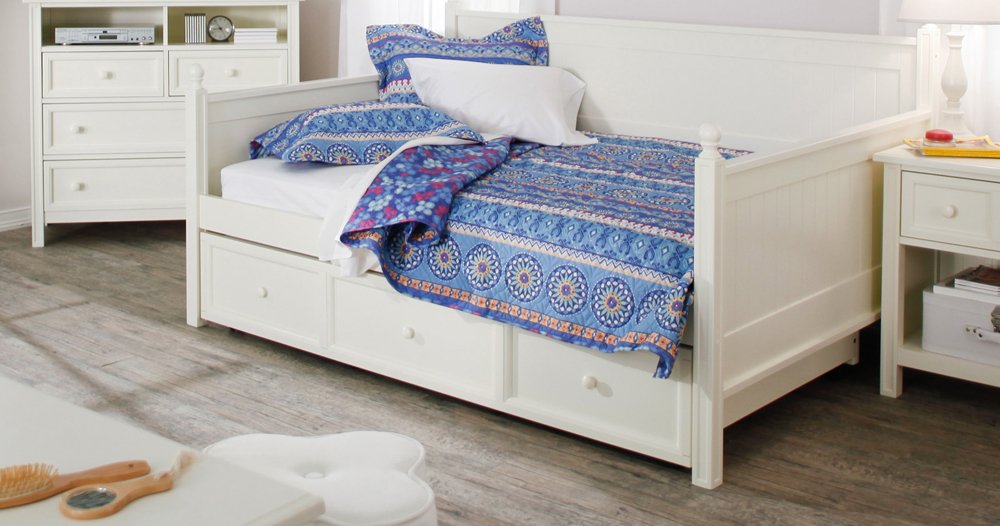
In contemporary interior design, the purpose of a day bed is mostly functional: sofa by day, bed by night. Yet style has always been a part of its appeal—in fact, there was a time when the day bed was the image of beauty and fashionable society.
Daybeds have been around in some form for centuries. Shakespeare even mentions them in his play Twelfth Night, written around 1601. But it was Napoleon-era France and its Directoire and Empire furniture styles (about 1800 to 1840 AD) that brought the daybed to prominence in the modern era.
The most famous daybed in history belonged to Madame Juliette Recamier (1777-1849), the beautiful, charming socialite whose salon was one of the most fashionable and intellectually scintillating in Paris. Her habit of reclining on a daybed was captured in a famous portrait by Jacques-Louis David. The painting is now in the Louvre, and the daybed style Madame loved now bears her name: the recamier.
Other recamier-like daybed forms were in vogue during the neoclassical Empire period, some of which blurred the line between daybed and chaise longue. Traditionally, chaises had backs, daybeds didn't. Loungers lay on their backs, daybedders lay sideways. But the meridienne, for example, named for the mid-day rest its users enjoyed when the sun neared its meridian, featured a high headrest that sloped down into a truncated half-back. Another popular daybed of the Empire era, the lit en bateau, resembled a sleigh-style bed (e.g. scrolled ends), and was often dramatically furnished. According to furniture historian Judith Miller, it would be "raised on a dais and draped in fabric."
The daybed's transition from decadent salon seat to living room sleeper sofa began with the relative aesthetic severity and function-oriented designs of late-19th century movements such as Arts and Crafts. In the 1920s and '30s, modernist designers were fascinated with the daybed's cousin, the chaise. Chaise lounges such as Le Corbusier's LC4 became icons of the streamlined modern style—now chaises were backless, and daybeds were the sofas. Mid-century modern designers responded by reducing the daybed to its cleanest form: an armless, rectangular-framed sofa.





